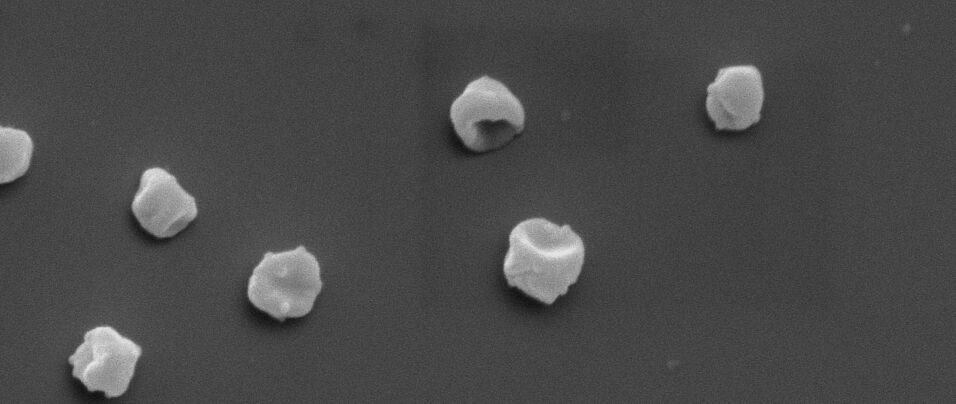Archaea constitute one of the three domains of life and, together with bacteria, they are the main actors controlling nitrification as a key component in the nitrogen cycle. Nitrification describes the biological process of converting ammonia to nitrite and subsequently to nitrate. In 2005 ammonia oxidizing archaea (AOA) have been detected for the first time. Since then they have been found to be globally distributed and in large amounts in almost all terrestrial and marine environments, which raised expectations among scientists that AOA play a major role in environmental processes.
“Ammonia oxidizing archaea require enzymes containing copper in order to convert ammonia to nitrite. To date we do not know how the microorganisms take up copper from soil and water. In our project we want to describe the molecular pathways for copper uptake”, says postdoctoral researcher Carolina Reyes from the Department of Environmental Geosciences. Her project “CORA – Copper Acquisition” is linked to the research groups of environmental geochemist Stephan Krämer (Department of Environmental Geosciences) and microbiologist Christa Schleper (Department of Ecogenomics and Systems Biology). The two research groups work intensively on environmental geochemistry of nutrient acquisition respectively the characterisation of archaea.
Searching for molecular mechanisms
What types of proteins are involved in copper uptake? How does copper uptake differ between archaea that derive from soils and archaea that have been isolated from aquatic systems? What different copper acquisition strategies exist? The project that runs for two years aims at finding answers to these questions. “We already know that in bacteria various models for copper acquisition and incorporation of copper into enzymes exist”, says Stephan Krämer, Head of the Department of Environmental Geosciences. It is currently unknown how AOA acquire copper from the environment, but the researchers have various hypotheses how this process is integrated into the metabolism of the organisms.
For their studies the researchers make use of strain Nitrososphaera viennensis, an archaeon that was described by Christa Schleper’s group a few years ago. It was isolated in 2011 from soil in the garden of the Department for Ecogenomics and Systems Biology of the University of Vienna. „Like in other AOA representatives the genome of N. viennensis shows a surprisingly high number of genes coding for copper-dependent enzymes. Therefore we expect them to have very efficient systems for copper uptake“, says Christa Schleper, Head of the Division of Archaea Biology and Ecogenomics of the Faculty of Life Sciences.
A hypothesis that will be tested in the project is whether AOA trigger changes in geochemistry in their surrounding environment in case of copper shortage. This process might involve highly specialised ligands, so called metallophores, which are able to bind to copper and to form extremely stable, soluble complexes that can be absorbed by the organisms. This mechanism could have an impact on the rate of ammonia that is converged into nitrite. The overall goal of the project is to contribute to the basic understanding of copper uptake by archaea.
Contact persons:
Univ.-Prof. Dipl.-Geol. Dr. Stephan Krämer
Head of the Department of Environmental Geosciences, University of Vienna
+43-1-4277-534 63
+43-664-60277-534 63
stephan.kraemer@univie.ac.at
Univ.-Prof. Dipl.-Biol. Dr. Christa Schleper
Head of the Division of Archaea Biology and Ecogenomics of the Department of Ecogenomics and Systems Biology, University of Vienna
+43-1-4277-765 10
+43-664-60277-765 10
christa.schleper@univie.ac.at

